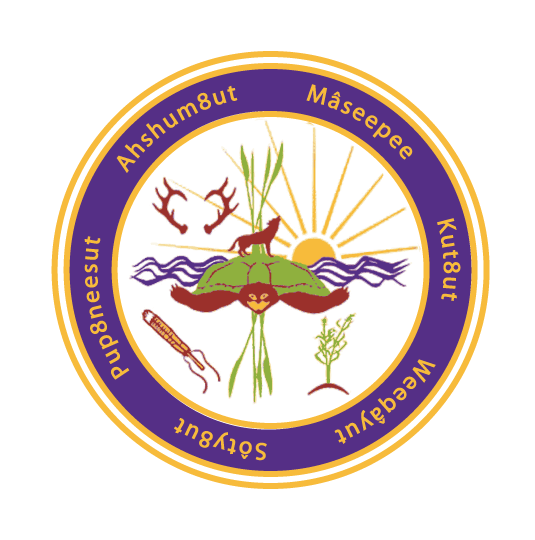Courts
Thanks to the Administration for Native Americans (ANA SEDS TG) grant funding and guidance from Suffolk University Law School’s Indigenous Peoples Clinic, the Elders Judiciary Committee and Supreme Court Judges have developed an infrastructure to enable tribal members to bring matters before the Mashpee Wampanoag Tribal Court. The rules of the court were developed to help tribal members understand the process of litigating a case in the Tribal Court, from the filing of a complaint to the ruling of the judge hearing the case.
One of the first tasks in developing the court’s infrastructure was to create the rules under which the court operate, the Rules of Civil Procedure (Kât8ut Meenawôkanash). The rules were written to be easily understood, direct, embrace timely process, and oriented with Wampanoag traditions. Previously, the Tribal Court operated under the Federal Rules of Civil Procedure, which turned out to be a poor fit, so the Tribal Court created the Kât8ut Meenawôkanash (Rules of Civil Procedure).
In a survey submitted to tribal members, timely results were an area of great concern. While developing the Kât8ut Meenawôkanash (Rules of Civil Procedure), the need for Appellate Rules of Civil Procedure became apparent. Rules of Evidence developed soon after. As the court continued to develop and and acquired Land into Trust, Criminal Jurisdiction led to the development of Admin. Order 27, Criminal Rules to be added to the court rules.
During the development of the Peacemaker Court, the need for a Code of Ethics was recognized to guide the Peacemakers in the traditional Wampanoag path of restorative justice. The Chief Judge had already developed a Code of Ethics for Judges and Attorneys, but to ensure that Peacemaker cases were held in confidence, a new set of Ethics was created in support of the traditional Wampanoag approach to resolving conflict within the tribe.
To make the Court more efficient and accountable, policy and procedure has been developed, providing criteria for the administration of the Court. Rules regarding how Tribal Court will operate provide a frame work for the day to day operation of the Tribal Court, and act as a guide for future generations who will work in Tribal Court.
The Self-Representation Guide Amended Jan. 2017 contains important information for Tribal members who file a complaint or need to answer a complaint. The guidebook offers a step-by-step explanation of the court process from beginning to end. The Self-Representation Guide contains a glossary of legal terms and words to help tribal members understand the Tribal Court process. It is our hope that the Tribal Court process will reflect our traditions and culture- providing harmony (weech8humôkanee n8hsweehtamuk), non-coercion (muhchee cheekunum n8hsweehtamuk), community health (wutahkeemôwuneayee n8sweetamuk), and sacred restorative justice (wuneetupânutamwee nôpahtawee pâyôhsukeey8uk).




